Blue and white 18cm wall plate featuring scenery of a house with a windmill on the water and a boat passing by. The back has the De Porceleyne Fles bottle and JT mark. The painter's mark looks to be from Fouw P.C.M. and the year code I believe is AY which would mean 1929. I'm unsure of what it says after the painter's mark; 751AY? 75/AY? After a closer look I noticed imprints above the De Porceleyne Fles logo, I'm not positive but it looks like it says IIX on the left and on the right a small capital 'B'.
I have a few questions but most importantly, is this a real Delft plate? What does the number before the "AY" mean? Why is there seemingly another marking on the back of the plate that is imprinted? Do you agree the painter's mark looks like Fouw P.C.M.s mark or could it be someone else? Thank you!
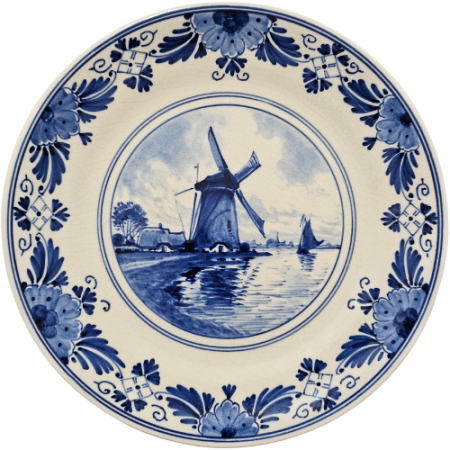
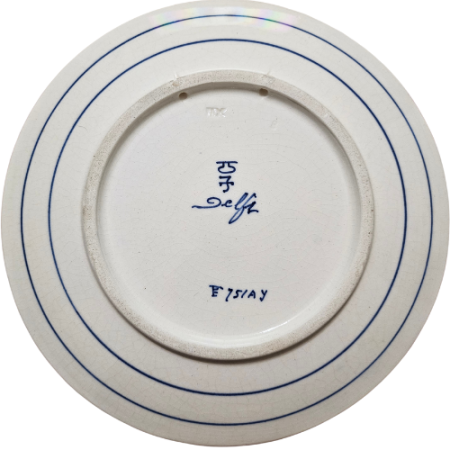
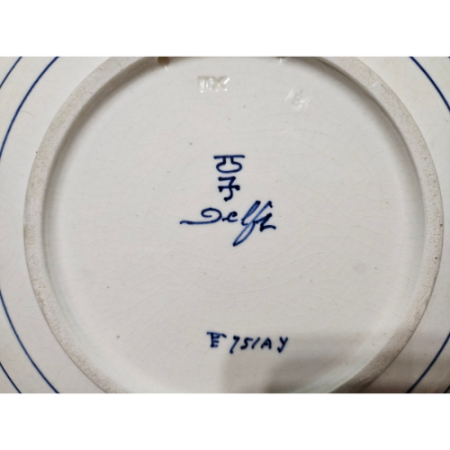



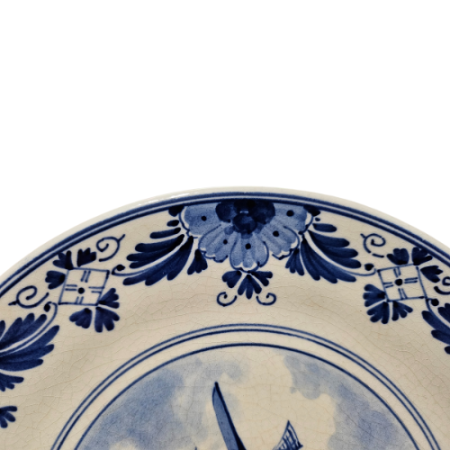
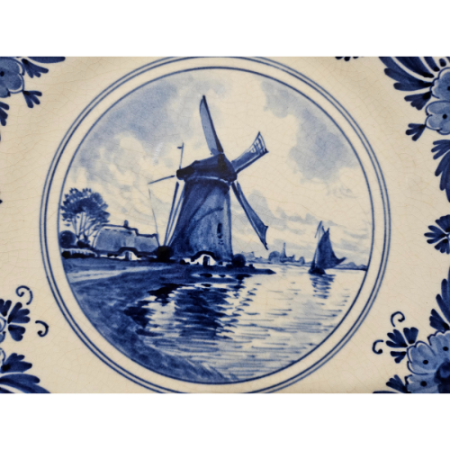












Reacties 3
it's indeed Flesje JT ( de Porceleyne Fles ) and de painter is Fouw who painted from1883 till 1931, so te date AY seems to be correct.
However : sometimes there were two painters who worked on one plate. One painted the decor and the other painted the edge. That way they could work faster. Mostly the painters who did the edge worked from home and were freelancers. So their initials are most of time not on the painters list. I'm not sure if this is the case here but also F JS / AY is possible. The inprinted IIX doesn't ring a bell to me but i'm sure someone knows more about it.
The B is most probably a "B" decor .
Interresting 😊
Verdict:
Analysis:
Merk:
Please see the following excerpts from the book Royal Delft, A Guide to the Porceleyne Fles by Rick Erickson page 232 and 233:

The number 751 and the impressed marks are explained here. The B is not because it’s a B decor as mentioned by Franky.
Kind regards,
Patrick
Add new comment
Only logged in users can post comments
Log in or register to post comments